#clifi
Explore tagged Tumblr posts
Text
Solarpunk Autumns. Solarpunk Winters.
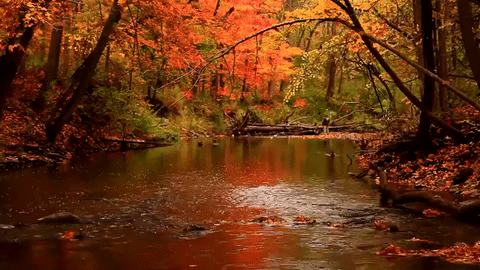
Solarpunk as a genre exists in a state of a permanent summer. Both as a genre, and an aesthetic. Solarpunk pictures usually show us worlds that have everything in so many shades of green. Green bushes. Green trees. Green everything. Fields in Solarpunk are always filled with ripe corn and wheat. And trees in Solarpunk are full of ripe fruit.
But if we look into Solarpunk worldbuilding there is also the fact that of course at some point at many places of the world it will become autumn, and winter.
I mean, I am feeling it right now, sitting here in my bed with three blankets and shivering, as the summer has very suddenly ended.
Sure, Solarpunk originated from Brazil. And while I do not know a whole lot about Brazillian climate, I do understand that it is close enough to the equator to be fairly warm yearround.
But I honestly would love to see more stories and artworks set in Solarpunk worlds during the autumn and winter. Especially because it is a very interesting topic when it comes to both the renewable energies and the food systems of Solarpunk worlds.
Now, admittedly, the renewable energy is less interesting to me, but we still should talk about it. In winter and autumn a lot of the renewable energy sources are a bit less viable. The sun has less energy and the further north (or south) you go, the less sun you get during the winter. Wind turbines also often struggle because there is in fact too much wind - and some older turbines do not do too well during harsh winter conditions. Water usually has less of a problem, unless the water energy is created in shallow conditions where the water freezes. But of course, there is nuclear energy to take care of most issues, even if everything else fails - even though some people still do not want to hear about it.
The food aspect is a lot more interesting though, especially from a modern point of view.
Because we people today are very used to eating the same stuff year around. Like potatoes, carrots, bellpeppers, tomatoes, cabbage, oranges, apples, pears, and bananas are usually available in the supermarket no matter when you go there. But of course we also know that those only are there because of the rather destructive ways we use to cultivate food and bring it to us. These things usually are grown somewhere closer to the equator and then are brought to Europe/North America via plane, emitting a lot more CO2.
Of course, this is a fairly new development. For the most of human history, nobody - or only the very richest people - had access to imported food like that. So instead they would only eat was either was available in their own country and their own fields right now, or that they could conserve in some way or form.
And frankly... I think that is something I would like to see some more off in Solarpunk media. In people not needing everything to be available all the time. And people also working to conserve food in one way or another to make it last longer.
Also I do want to bring it up again: There were a lot of well known "winter vegetables" in Europe during most of our history there. Stuff that would get ripe in late autumn and would keep rather well. And a lot of those vegetables have been forgotten.
So... Yeah, I really would see that issue discussed a bit more.
And sure, we might be able to worldbuild around the issue in some degree with greenhouses and stuff. But I think it would be nice to just question our relation with the always available foods.
#solarpunk#lunarpunk#food culture#food#vegetables#fruits#renewables#renewable energy#history#scifi#clifi#climate fiction
262 notes
·
View notes
Text
"To change our relationship to the physical world – to end an era of profligate consumption by the few that has consequences for the many – means changing how we think about pretty much everything: wealth, power, joy, time, space, nature, value, what constitutes a good life, what matters, how change itself happens. As the climate journalist Mary Heglar writes, we are not short on innovation. “We’ve got loads of ideas for solar panels and microgrids. While we have all of these pieces, we don’t have a picture of how they come together to build a new world. For too long, the climate fight has been limited to scientists and policy experts. While we need their skills, we also need so much more. When I survey the field, it’s clear that what we desperately need is more artists.”" -Rebecca Solnit. Emphasis added.
Artists are so so important. I've had people tell me they feel bad because, as an artist, they don't think they can contribute anything worthwhile to climate change. They're wrong.
We cannot build a future we cannot imagine. Artists are so important. Artists show us what could be - what we could be
#artists are so so important#climate change#climate crisis#climate news#climate action#quote#quotes#rebecca solnit#literature#climate fiction#clifi#science fiction#the arts#not news#hope#hope posting#solarpunk#hopepunk#excuse my pretentiousness in that last bit pls#art appreciation#artist appreciation#this goes for all types of artists btw!!
353 notes
·
View notes
Text

Beautiful artwork. I love architecture that incorporates many elements, here we can see water, greenery, air and stone. In the ideal world architecture will be more life giving to both those who occupy them and to the planet. credit Jacek Yerka
#solarpunk#clifi#climate optimism#climate positive#sustainable design#environmental design#climate art
261 notes
·
View notes
Text
For decades we dreamed dystopia, and in March of 2020, when COVID crashed upon U.S. shores, it seemed like we had dreamed it so well we wished it into being. While wealthy reactionaries are building actual bunkers and prepping for environmental collapse, fantasizing about which shade of hopelessness our apocalypse will take is a luxury we can no longer afford. By accepting as inevitable humanity’s demise by its own hand, post-apocalyptic fiction places no responsibility on the living to course correct.
These days, climate change isn’t over the horizon, it’s here. The virus that shuts down the globe? We had that, too. Dystopian fiction? That’s so 2012. It’s time we collectively dream of something else. A better world is possible, but if artists and writers are to contribute to that better world, we’re going to need to balance our splendid hellscapes with gardens of earthly delight. We need to envision futures that are livable and happy, and we need to imagine how we get there from here. What’s more, we need to make those worlds as thrilling and engaging as any post-apocalyptic zombie-strewn nightmare.
Fortunately, we don’t need to invent a new literary genre to show us the way to a better tomorrow. Just as there is a left-wing climate movement demanding humanity break from fossil fuels to create a bright future for life on Earth, so is there a parallel climate fiction that allows us to imagine that better world. In steps solarpunk, left-wing literature’s answer to the dystopian novel. Solarpunk looks towards a post-capitalist future of renewable energy. It rejects climate “doomerism” and shows what our collective future could look like if we heal our relationship with the natural world.
Far from Star Trek’s “full luxury space communism,” where humans race across galaxies via endless sources of energy, the technology in solarpunk is imminently achievable. In the anthology Future Primitive: The New Ecotopias, science fiction writer and democratic socialist Kim Stanley Robinson describes this genre as rejecting “the inevitability of the machine future.” Instead it asks, “What is the healthiest way to live? What is the most beautiful?” Rather than Elon Musk’s tent cities on Mars, these fictional worlds “cobble together aspects of the postmodern and the paleolithic, asserting that we might for very good reasons choose to live in ways that resemble in part the ways of our ancestors.”
-via Current Affairs, March 25, 2024
#solarpunk#clifi#scifi#climate fiction#climate change#climate action#hope#hope posting#hopepunk#dystopia#utopia
41 notes
·
View notes
Text
she's back

Foxhunt!!
In a lush solarpunk future, plants have stripped the poison from the air and trained warriors keep resource hoarders in check. Orfeus only wants to be a travelling singer - so why does an assassin from the Order of the Vengeful Wild come after her head? Foxhunt is the bisexual-disaster-bard, found-family, action-adventure solarpunk novel of my absolute heart, and I'm relieved beyond words that it's back available to read! Thanks extremely to everyone who's read or talked about it 🦊❤️
#vengeful wild#foxhunt#indie authors#queer books#clifi#second edition baby!!!#ebook up everywhere; print in progress; Wolfpack is coming along nicely as well!#Publisher who pulled the books wouldn't let us use the old covers;#I think these ones convey some fun things about genre and also luckily you can still go look at Laya's beautiful original covers#on her tumblr and website!#that's http://layaroseart.com/
37 notes
·
View notes
Text
Debbie Urbanski’s ‘After World’
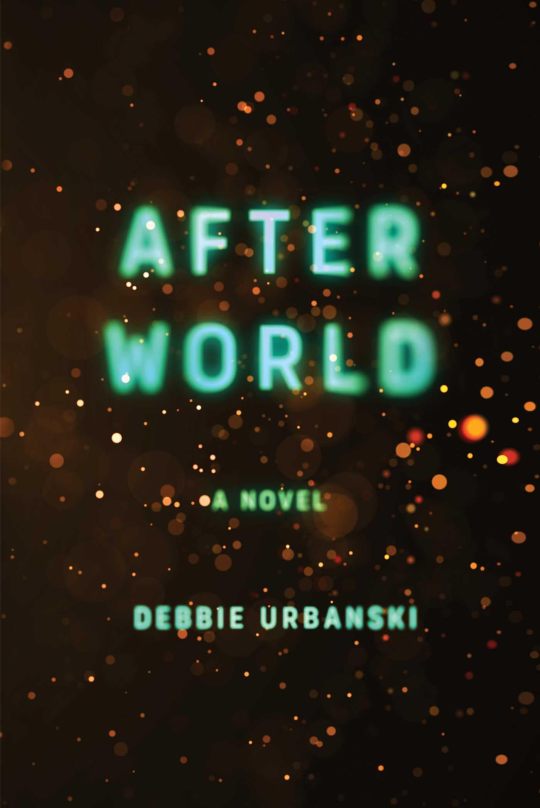
Debbie Urbanski's debut novel After World is an unflinching and relentlessly bleak tale of humanity's mass extinction, shot through with pathos and veined with seams of tragic tenderness and care:
https://www.simonandschuster.com/books/After-World/Debbie-Urbanski/9781668023457
I first encountered Urbanski in "An Incomplete Timeline of What We Tried," an experimental short story on Motherboard's brilliant Terraform science fiction portal:
https://www.vice.com/en/article/xwvgeq/an-incomplete-timeline-of-what-we-tried
"Incomplete Timeline" is a list of climate remediation steps "working back from human extinction," like "increased military fortification of national, provincial, and state borders," "the founding of several utopias," and "redefine the word wilderness."
These items begin with a climax, or perhaps an anticlimax: "The coordinated release of various strains of a human sterilization virus."
This is the jumping off point for After World, which expands this final item to the action of a wrenching tale whose backstory is the list's remainder. Sen Anon – the story's semi-protagonist – is 18 years old when the world learns that every person alive has been sterilized and so the human race is living out its last years.
The news triggers a manic insistence that this is a good thing – long overdue, in fact – and the perfect opportunity to scan every person alive for eventual reincarnation as virtual humans in an Edenic cloud metaverse called Gaia. That way, people can continue to live their lives without the haunting knowledge that everything they do makes the planet worse for every other living thing, and each other. Here, finally, is the resolution to the paradox of humanity: our desire to do good, and our inevitable failure on that scor8e.
And so the Earth is converted to a place of mass suicides, as people gurn and mug while boarding airplanes filled with explosives so they can go out in a literal blaze of glory. The food will run out soon, and the government makes sure everyone has a suicide pill for the day when the hunger grows too intense. Not everyone is lucky enough to get on one of the suicide flights, and, being eager to see themselves off before they harm the planet further, just hang themselves in the garage or jump off a roof. They are counted as heroes, but also nuisances, because disposing of the bodies is a lot of work.
But some people – young people – are given a mission to live on for as long as possible. These are the observer/recorders who are charged to spend the last days of the species closely watching the return of the natural world, the seeing off of humanity, and to write it all down in longhand in a succession of notebooks that are taken away by drones. This is part of the story humanity cooks up for itself about extinction being a noble choice, rather than a chaotic act born of desperation.
Sen Anon is one of these observers, and her mothers take her to a remote cabin to live out (and observe) the last of humanity's days, ensuring she is settled in and then killing themselves. After all, without them, Sen Anon's limited food supply – meagerly supplemented by drones in proportion to the quality of the observations in her notebooks – will stretch further.
Much of the novel takes the form of Sen Anon's notebook observations, countersunk with an omniscient third-person narrator who is revealed to be [storyworker] ad39-393a-7fbc, a software agent involved in the project to recreate all those dead humans in the Gaia metaverse.
[storyworker] ad39-393a-7fbc is a very unreliable narrator, who reprograms itself through the course of the story, all the while muttering asides to itself about the theoretical basis for telling Sen's story this way. [storyworker] ad39-393a-7fbc struggles with a supervisory AI that has been charged with overseeing all the [storyworkers], but which can't – or won't – rein in [storyworker] ad39-393a-7fbc as [storyworker] ad39-393a-7fbc grows more involved in Sen's life.
This experimental storytelling style (supplemented by found texts from humanity's dying, like a glossary of terms to be retired and new terms being created by a linguist who is starving to death as they complete their task) creates a contradictory narrative distance and closeness.
It's a curiously flawed omniscience that's allows Urbanski to capture the yawning, bottomless horror of the climate emergency of today and on the horizon. I don't think I've ever experienced the kind of sustained, deepening existential dread that After World created, chapter by chapter.
To sharpen this, Sen's mothers – scientists who were given exceptions to the no-child policy because their work was deemed essential to the now-abandoned project of saving humanity – are grimly supportive of the mass suicide project. When Sen's own horror creeps up on her, her mothers are sharp and often unkind, with only the smallest flashes of love and sorrow for their daughter escaping their facades, all the more vivid for their rarity.
In contrast, [storyworker] ad39-393a-7fbc grows ever more sympathetic to Sen and the rest of vanished humanity. [storyworker] ad39-393a-7fbc is a very convincing alien with motives and perspectives that are profoundly nonhuman, and yet, the compassion and love are unmistakable.
Of After World's two protagonists, [storyworker] ad39-393a-7fbc might be the more relatable. It takes an alien point of view to truly see humanity's flawed glory, irredeemable and irreplaceable. If you reveled in the nonhuman umwelts on display in Laura Jean McKay's 2020 debut The Animals In That Country, [storyworker] ad39-393a-7fbc will stretch your brain and imagination in similar ways:
https://pluralistic.net/2022/04/27/im-a-backdoor-man/#doolittle
After World is a book that goes hard. Pitiless, merciless and relentless, it takes you to the darkest depths of climate despair and reveals the indestructible beauty at our species' core.

If you'd like an essay-formatted version of this post to read or share, here's a link to it on pluralistic.net, my surveillance-free, ad-free, tracker-free blog:
https://pluralistic.net/2023/12/18/storyworker-ad39-393a-7fbc/#digital-human-archive-project
#pluralistic#books#reviews#eschatology#gift guide#science fiction#postapocalyptic#experimental fiction#clifi
92 notes
·
View notes
Text
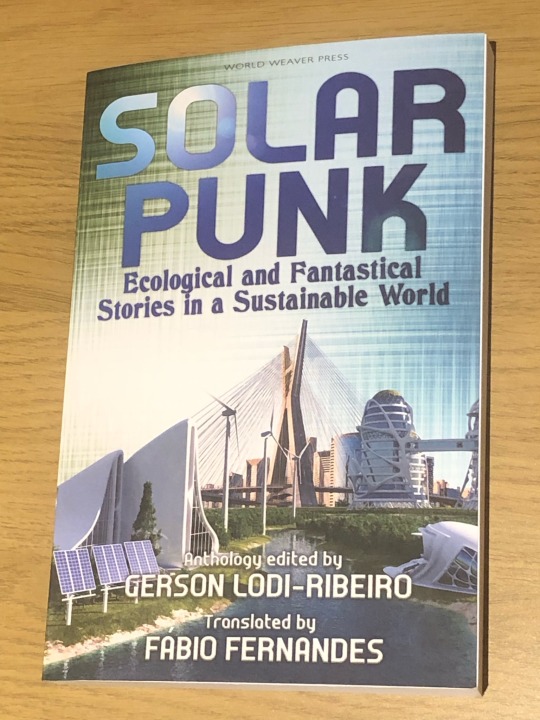
What I’ve been reading recently
#solarpunk#hopepunk#environmentalism#cottagepunk#optimism#climate justice#bright future#tidalpunk#scifi#clifi#Gerson Lodi-Ribeiro#Fabio Fernandes
85 notes
·
View notes
Text
I just subscribed to Solarpunk Magazine 2025 and backed the City Of Hope TTRPG! Very cool project, go check it out! https://www.kickstarter.com/projects/solarpunkmagazine/city-of-hope-0?ref=thanks-copy
17 notes
·
View notes
Text
Starting How High We Go In The Dark and getting absolutely slapped in the face with the tonal jump from 'grounded, melancholic cli-fi about grief both normal and preemptive, climate anxiety and atlas complexes' to 'exaggerated apocalyptic social satire about a prison converted into an amusement park for sickly children's last day before they're euthanized'
#these are chapters 1 and 2 for reference#how high we go in the ark#Sequoia Nagamatsu#sff#clifi#literature#tht
7 notes
·
View notes
Text
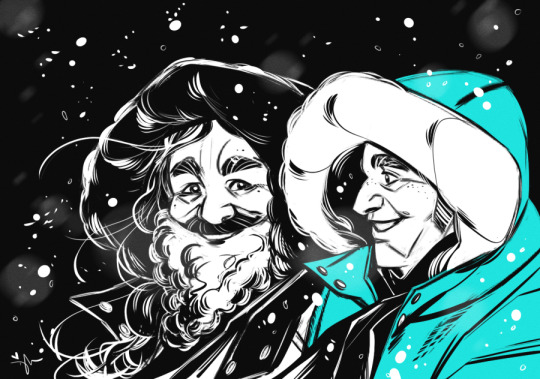
Stede and Ed hanging out in the snow on an ice ship. @y2jenn made this beautiful piece for @veeagainsttheday's and my post-apocalyptic ice piracy AU/climate change fic Runaway Effects. Go give Jenn some love because she's the best and I stare at this art all the time!! Also our fic is rated E for Explicit because, well, obviously they do more than just cuddle for warmth. ;)
#ofmd fanart#ofmd fanfic#ice pirates#edward x stede#edward teach#stede bonnet#blackbeard#our flag meets death#ofmd#huddling for warmth#team icy hot#gentlebeard#snowball earth#it's very very cold on earth but stede and ed warm each other up very very nicely#climate fiction#solarpunk fiction#clifi#world building#post apocalypse
68 notes
·
View notes
Text
Join me in June 2025!
June is almost here! Next month I will be offering my month-long "Meet The Last Man" module with SPACE (Signum Portals for Adult Continuing Education) online via Signum University.
Mary Shelley's novel is one of the most relevant books we can read right now, and I can't wait to discuss it with students!
Watch the teaser here:
youtube
More information is available here.
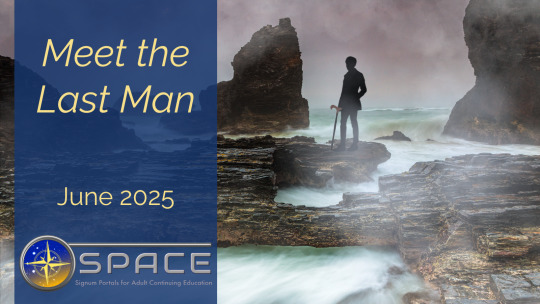
#Mary Shelley#Science Fiction#Dystopia#Pandemic Fiction#EcoGothic#CliFi#Political Science Fiction#Post-Apocalyptic Fiction#Gothic#Youtube
4 notes
·
View notes
Text
The history of Solarpunk
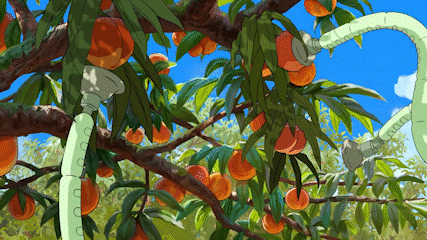
Okay, I guess this has to be said, because the people will always claim the same wrong thing: No, Solarpunk did not "start out as an aesthetic". Jesus, where the hell does this claim even come from? Like, honestly, I am asking.
Solarpunk started out as a genre, that yes, did also include design elements, but also literary elements. A vaguely defined literary genre, but a genre never the less.
And I am not even talking about those early books that we today also claim under the Solarpunk umbrella. So, no, I am not talking about Ursula K. LeGuin, even though she definitely was a big influence on the genre.
The actual history of Solarpunk goes something like that: In the late 1990s and early 2000s the term "Ecopunk" was coined, which was used to refer to books that kinda fit into the Cyberpunk genre umbrella, but were more focused on ecological themes. This was less focused on the "high tech, high life" mantra that Solarpunk ended up with, but it was SciFi stories, that were focused on people interacting with the environment. Often set to a backdrop of environmental apocalypse. Now, other than Solarpunk just a bit later, this genre never got that well defined (especially with Solarpunk kinda taking over the role). As such there is only a handful of things that ever officially called themselves Ecopunk.
At the same time, though, the same sort of thought was picked up in the Brazilian science fiction scene, where the idea was further developed. Both artistically, where it got a lot of influence from the Amazofuturism movement, but also as an ideology. In this there were the ideas from Ecopunk as the "scifi in the ecological collaps" in there, but also the idea of "scifi with technology that allows us to live within the changing world/allows us to live more in harmony with nature".
Now, we do not really know who came up with the idea of naming this "Solarpunk". From all I can find the earliest mention of the term "Solarpunk" that is still online today is in this article from the Blog Republic of Bees. But given the way the blogger talks about it, it is clear there was some vague definition of the genre before it.
These days it is kinda argued about whether that title originally arose in Brazil or in the Anglosphere. But it seems very likely that the term was coined between 2006 and 2008, coming either out of the Brazilian movement around Ecopunk or out of the English Steampunk movement (specifically the literary branch of the Steampunk genre).
In the following years it was thrown around for a bit (there is an archived Wired article from 2009, that mentions the term once, as well as one other article), but for the moment there was not a lot happening in this regard.
Until 2012, when the Brazilian Solarpunk movement really started to bloom and at the same time in Italy Commando Jugendstil made their appearance. In 2012 in Brazil the anthology "Solarpunk: Histórias ecológicas e fantásticas em um mundo sustentável" was released (that did get an English translation not too long ago) establishing some groundwork for the genre. And Commando Jugendstil, who describe themselves as both a "Communication Project" and an "Art Movement", started to work on Solarpunk in Italy. Now, Commando Jugendstil is a bit more complicated than just one or the other. As they very much were a big influence on some of the aesthetic concepts, but also were releasing short stories and did some actual punky political action within Italy.
And all of that was happening in 2012, where the term really started to take off.
And only after this, in 2014, Solarpunk became this aesthetic we know today, when a (now defuct) tumblr blog started posting photos, artworks and other aesthetical things under the caption of Solarpunk. Especially as it was the first time the term was widely used within the Anglosphere.
Undoubtedly: This was probably how most people first learned of Solarpunk... But it was not how Solarpunk started. So, please stop spreading that myth.
The reason this bothers me so much is, that it so widely ignores how this movement definitely has its roots within Latin America and specifically Brazil. Instead this myth basically tries to claim Solarpunk as a thing that fully and completely originated within the anglosphere. Which is just is not.
And yes, there was artistic aspects to that early Solarpunk movement, too. But also a literary and political aspectt. That is not something that was put onto a term that was originally an aesthetic - but rather it was something that was there from the very beginning.
Again: There has been an artistic and aesthetic aspect in Solarpunk from the very beginning, yes. But there has been a literary and political aspect in it the entire time, too. And trying to divorce Solarpunk from those things is just wrong and also... kinda misses the point.
So, please. Just stop claiming that entire "it has been an aesthetic first" thing. Solarpunk is a genre of fiction, it is a political movement, just as much as it is an artistic movement. Always has been. And there has always been punk in it. So, please, stop acting as if Solarpunk is just "pretty artistic vibes". It is not.
Thanks for coming to my TED Talk, I guess.

#solarpunk#solarpunk aesthetic#solarpunk fiction#political movement#history#history of solarpunk#amazofuturismus#put the punk back in solarpunk#scifi#science fiction#clifi#climate fiction#ecopunk
3K notes
·
View notes
Text






Bewässerung in der Hitzezeit
#clifi#technologies#erfindung#wissenschaft#reading#hitze#zukunft#lesen#deutsche bücher#scifi#Hitzezeit#books#bücher#hitzezeit
2 notes
·
View notes
Text
I both love and hate that Solarpunk is trending in the current times.
I hate it because it means we're past the time to give warning about the crisis. Cyberpunk and post-apo essentially failed as ''warning genres''. Ofc that's not all they are. I hate that we now have to face the current socio-climatological disaster.
But I love that we're gathering around this genre to imagine a cute cozy future. It feels so much better to share things based on hope, communities, and brighter times.
30 notes
·
View notes
Text
youtube
I'm still amazed that nobody has heard of this project that tom hanks wrote and starred in. This is an early solarpunk web series that nobody remembers so now the whole thing is free on youtube.
As for why nobody has heard of it, well it was a project that was released in 2012 on yahoo videos. So that explains some things.
Its still pretty interesting.
24 notes
·
View notes
Text
Hello! You! Do you like to listen to things like books and stories? Well, Reckoning Magazine podcasted my critically-acclaimed* short story, "The Last Great Repair Tech of the American West" and it's FREE TO LISTEN!
It's about LOVE it's about COMMUNITY it's about BEING OLD AND COOL AND TRANS.
Alex Brown from Reactor Magazine (formerly known as Tor Magazine) called it "a good reminder that queerness isn’t just an identity, it’s a way of being, a political movement, a revolutionary ideology, and a community."
*People reviewed it and said nice things.
#hi can you tell that I'm TERRIBLE at marketing-type stuff#short story writing#science fiction#clifi#environmental fiction#reckoning magazine#writeblr#op#story: the last repair tech
2 notes
·
View notes